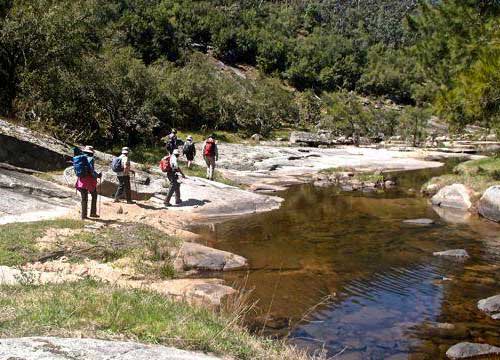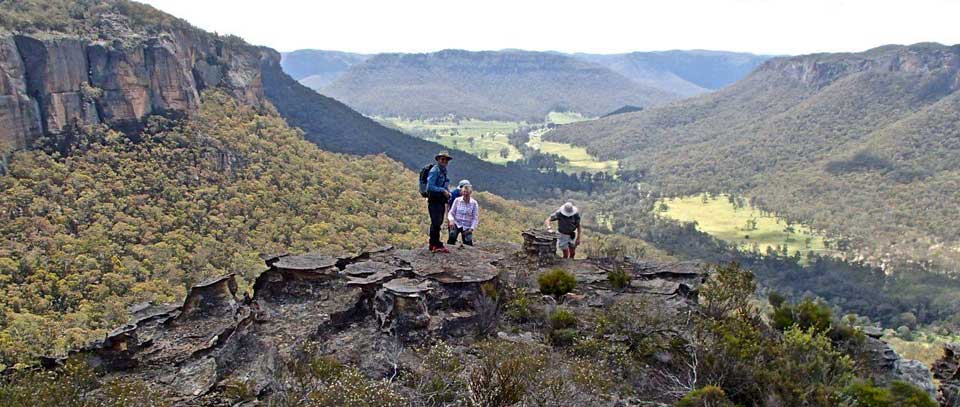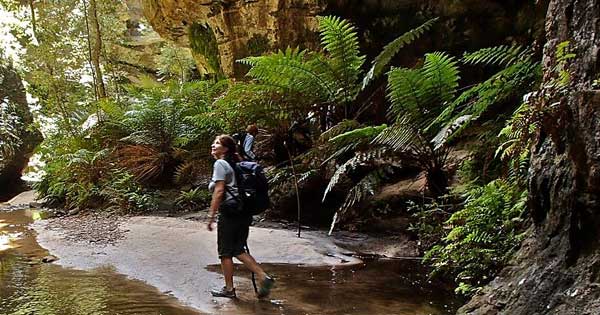Membership of the Bushwalking Group is available to all members of the Society by paying an annual $20 bushwalking levy, primarily to cover our bushwalking insurance. See our BMCS Insurance FAQs
New participants can 'try out' the experience by taking up to 3 bushwalks as a temporary member before becoming a society member and paying the bushwalkers levy.Our Bushwalking Convenor is Doug Nicholls. Doug can be contacted on 0455 850 753, or by email at dougnicholls@bigpond.com
For more information, here's our Bushwalker's Guide and Bushwalk Leader's Handbook and a link to Bushwalking NSW's Bushwalking Manual
Bushwalking Programs
Before attending your first walk, phone the designated contact person or the Group Coordinator.
Changes to programs appear in red.
Saturday Walks are usually a full day, longer walk at a faster pace. Bring morning tea, lunch and adequate water.
Coordinator: Harold Thompson
phone: 0409 010 737
email: harold.thompson@bigpond.com
Monday Walks are 'Short Day' walks of 3 - 5 hours, suitable for walkers of average fitness. Bring morning tea, lunch and adequate water.
Coordinator: Melanie Lawson
phone: 0431214687
email: melanielawson@outlook.com.au
Tuesday walks are 'Medium Day' walks of 3-5 hours suitable for walkers of average fitness. Bring morning tea, lunch and adequate water.
Coordinator: Phill Cox
phone: 0415 449 174
email: mrpacox@hotmail.com
Thursday Walks are walks of 2 - 3 hours conducted at a leisurely pace. Bring morning tea, lunch and adequate water (unless otherwise noted).
Coordinator: Beverley Thompson
phone: 02 4757 2076
email: denfenella12@bigpond.com
Grades of Walks

There aren't many flat walks in the Blue Mountains. We have inherited a superb network of walking tracks, but many of them are not maintained to a high standard.
On walks both in and outside the Blue Mountains there may be steep climbs and many steps and you may encounter hazards such as uneven, loose and slippery surfaces, creek crossings, and obstacles such as fallen trees and rocks.
Be prepared for sudden weather changes.
It is not easy to grade walks. What is easy for some is difficult for others. The following is a guide. The distance of the walk and the expected weather conditions need to also be considered by individual walkers.
Be aware of your own capabilities.
The grade of each walk is indicated on the Walks Program.
Grade 1.
Fairly flat walk on roads, fire trails and walking tracks.
Grade 2.
Fairly flat, but with some rough and/or steep sections, possibly some natural obstacles and some steps.
Grade 3.
May include rough/steep sections, many steps, a steep climb and descent, natural obstacles, some off track walking.
Grade 4.
May include more of the above, with a greater degree of difficulty.
Grade 5.
We occasionally arrange a walk considered most suited to experienced and very fit walkers. It is likely to include some or all of the following: rough/steep sections, steep climbs and descents, many steps, natural obstacles, off track walking.
Contact the leader or our Bushwalking Convenor before attending:
- If this is your first walk
- If you have any doubts or questions
- If the walk is limited in numbers and booking is required.
Tread Softly Code
The National Parks and Wildlife Service's "Tread Softly Code" has 10 points, which we as Conservationists should note and lead by example.

- stay on the track.
- avoid walking on sensitive vegetation by staying on hard ground wherever possible and avoid easily eroded soils - delicate vegetation is easily damaged by tramping.
- don't walk around wet areas on the track - this just widens the bog area.
- keep group size small so that you won't have a significant impact on the environment.
- use fuel or gas stoves rather than wood fires, and always comply with fire bans.
- where there are no toilet facilities, bury human waste at least 100m away from watercourses at a depth of 15cm or take it with you if possible.
- leave the bush as you found it - don't pick flowers, or break tree limbs (even if you think the wood is dead, it provides an important habitat for many insects and other animals).
- take a look around before you leave lunch spots and camping areas to check that you haven't left any signs of your use.
- take all your rubbish with you, including organic waste such as apple cores and citrus peel. Do the right thing and collect any other rubbish you see on the way.
- at the end of each trip, take a moment to think about ways you could lessen your 'footprint', even more on your next walk.

Bushwalking Forms for Walks Leaders
- Guide and Checklist for Walks Leaders
- Bushwalk Leader's Handbook
- Walk Attendance/Activity Form Please print this on the back of the Activity Report Form (below)
- Activity Report Form (updated November 2023) Please print this on the back of the Walks Attendance/Activity Form (above)
- Temporary Members Form Please print this on the back of the Child Risk Waiver Form (below)
- Child Risk Waiver Form Please print this on the back of the Temporary Members Form (above)
- Incident Report Form (updated June 2023)
- Monthly Activities Reporting Form
– the Darug and Gundungurra people –
and pay respect to their Elders past, present and emerging.

 River Caves on Newnes Plateau
River Caves on Newnes Plateau Blue Mountains Train Timetable
Blue Mountains Train Timetable